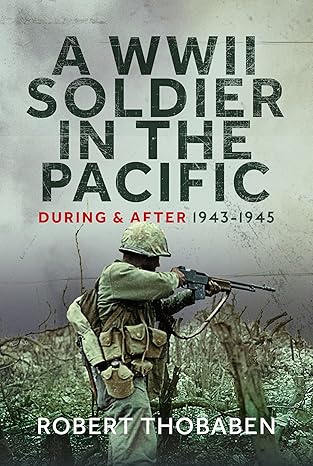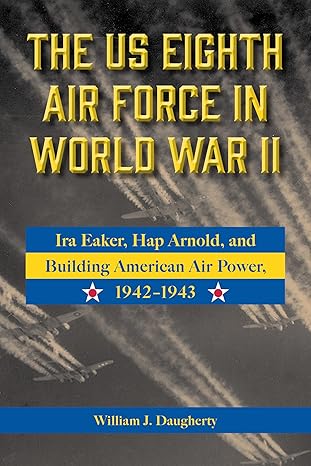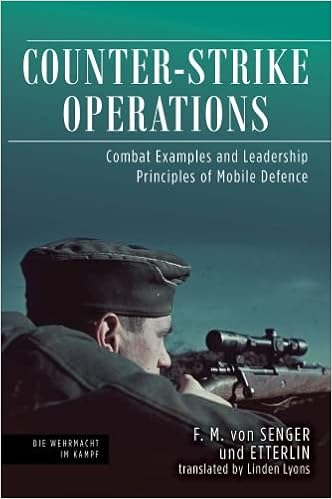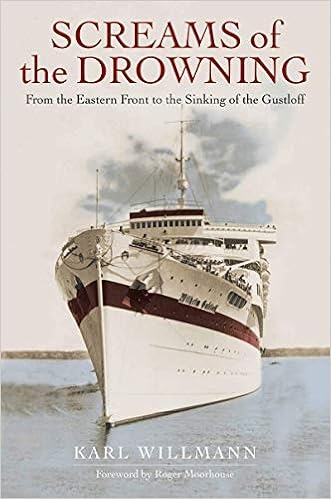Terror Floated from the Skies
By Walter F. Giersbach
The war in Asia was far away when a family in Bly, Oregon, triggered a 15-kg anti-personnel bomb. Instantly killed on May 5, 1945, were Elsye Mitchell, a pregnant mother, and five teenaged children.
Elsye almost didn’t want to go on the picnic that day, but she had baked a chocolate cake in anticipation of their outing. The 26-year-old was pregnant with her first child. On that morning she decided she felt decent enough to join her husband, Rev. Archie Mitchell, and a group of Sunday school children as they set out for nearby Gearhart Mountain in southern Oregon.

First casualty, 26-year-old Elsye Mitchell
While Archie parked their car, Elsye and the children stumbled upon a strange-looking object in the forest. The minister would later describe that moment to local newspapers: “I…hurriedly called a warning to them, but it was too late. Just then there was a big explosion. I ran up – and they were all lying there dead.” Lost in an instant were his wife and unborn child, alongside Eddie Engen, 13, Jay Gifford, 13, Sherman Shoemaker, 11, Dick Patzke, 14, and Joan “Sis” Patzke, 13. Against a scenic backdrop far removed from the war raging across the Pacific, Mitchell and five other children became the first — and only — civilians to die by enemy weapons on the United States mainland during World War II.. [1]
What U.S. military investigators sent to the blast scene immediately knew — but didn’t want anyone else to know — was that the strange contraption was a high-altitude balloon bomb launched by Japan to attack North America. After American aircraft bombed Tokyo and other Japanese cities during the Doolittle Raid of 1942, the Japanese military command wanted to retaliate in kind, but its manned aircraft were incapable of reaching the West Coast of the United States. What the Japanese military lacked in technology, however, it made up for in geography.
Citing the need to prevent panic and avoid giving the enemy location information that could allow them to hone their targeting, the U.S. military censored reports about the Japanese balloon bombs. Although many Bly locals knew the truth, they reluctantly followed military directives and adopted a code of silence about the tragedy as the media reported that the victims died in “an explosion of undetermined origin.”
Still largely unknown, these armaments were a byproduct of an atmospheric experiment by the Axis power. In the 1940s, the Japanese were mapping out air currents by launching balloons attached with measuring instruments from the western side of Japan and picking them up on the eastern side. Using 40-foot-long ropes attached to the balloons, the military mounted incendiary devices and 30-pound high-explosive bombs rigged to drop over North America and spark forest fires they hoped would create panic and divert resources from the war effort. [2]
The researchers noticed that a strong air current traveled across the Pacific at about 30,000 feet. Using that knowledge, in 1944 the Japanese military made what could be considered the first intercontinental weapon system: explosive devices attached to paper balloons that were buoyed across the ocean by a jet stream. [3]
During World War II, the Japanese thought the winds could save them. Its scientists had discovered that a westerly river of air 30,000 feet high — the “jet stream” — could transport hydrogen-filled balloons to North America in three to four days. For two years the military produced thousands of balloons with skins of lightweight, but durable, paper made from mulberry wood. This was stitched together by conscripted schoolgirls. Using 40-foot-long ropes attached to the balloons, the military mounted incendiary devices and 30-pound high-explosive bombs rigged to drop over North America and spark forest fires that might instill panic and divert resources from the war effort.
The project “called for sending bomb-carrying balloons from Japan to set fire to the vast America forests, in particular those of the Pacific Northwest. It was hoped that the fires would create havoc, dampen American morale and disrupt the U.S. war effort,” James M. Powles describes in a 2003 issue of the journal World War II. The balloons, or “envelopes,”, designed by the Japanese army were made of lightweight paper fashioned from the bark of trees. Attached were bombs composed of sensors, powder-packed tubes, triggering devices and other simple and complex mechanisms. [4]

Japanese fire balloon after it had been shot down by a Navy aircraft Jan. 10, 1945
Between November 1944 and April 1945, the Japanese military launched more than 9,000 of the pilotless weapons in an operation codenamed “Fu-Go.” Most of the balloons fell harmlessly into the Pacific Ocean, but more than 300 of the low-tech white orbs made the 5,000-mile crossing and were spotted fluttering in the skies over the western United States and Canada — from Holy Cross, Alaska, to Nogales, Arizona, and even as far east as Grand Rapids, Michigan. In March 1945, one balloon even hit a high-tension power line and caused a temporary blackout at the Hanford, Washington, plant that was producing plutonium that would be used in the atomic bomb dropped on Nagasaki five months later. None of the balloons, however, had caused any injuries — until Rev. Mitchell’s church group came across dead civilians and the wreckage on Gearhart Mountain.
Citing the need to prevent panic and avoid giving the enemy location information that could allow them to calculate their targeting, the U.S. military censored reports about the Japanese balloon bombs. Although many Bly locals knew the truth, they reluctantly followed military directives and adopted a code of silence about the tragedy as the media reported that the victims died in “an explosion of undetermined origin.” By the end of May 1945, however, the military decided in the interest of public safety to reveal the true cause of the explosion and warn Americans to beware of any strange white balloons they might encounter — information divulged a month too late for the victims in Oregon.
Geographic Spread of Terror
A few years ago, a couple of forestry workers in Lumby, British Columbia — about 250 miles north of the U.S. border — happened upon a 70-year-old Japanese balloon bomb. It was just the most recent discovery.
In spite of government secrecy, sightings of the airborne bombs began cropping up throughout the western U.S. In December 1944, folks at a coal mine close to Thermopolis, Wyo., saw “a parachute in the air, with lighted flares and after hearing a whistling noise, heard an explosion and saw smoke in a draw near the mine about 6:15 pm,” James M. Powles wrote in a 2003 issue of the journal, World War II.
Another bomb was seen a few days later near Kalispell, Mont. Local sheriffs determined that the object was not a parachute, but a large paper balloon with ropes attached. There was also a gas relief valve, a long fuse connected to a small incendiary bomb, and a thick rubber cord. The balloon and parts were taken to Butte, Mont., where personnel from the FBI, Army and Navy carefully examined everything. The officials determined that the balloon was of Japanese origin, but how it had gotten to Montana and where it came from was a mystery."
Sightings of the airborne bombs began cropping up throughout the western U.S. in late 1944. In December, folks at a coal mine close to Thermopolis, Wyo., saw “a parachute in the air, with lighted flares and after hearing a whistling noise, heard an explosion and saw smoke in a draw near the mine about 6:15 pm,” one witness said.
Another balloon bomb struck a power line in Washington state, cutting off electricity to the Hanford Engineer Works, where the U.S. was conducting its own secret project, manufacturing plutonium for use in nuclear bombs.
After the war’s end, reports came in from far and wide of balloon bomb incidents. The Beatrice Daily Sun reported that the pilotless weapons had landed in seven different Nebraska towns, including Omaha. The Winnipeg Tribune noted that one balloon bomb was found 10 miles from Detroit and another one near Grand Rapids.
Over the years, the explosive devices have popped up here and there. In November 1953, a balloon bomb was detonated by an Army crew in Edmonton, Alberta, according to the Brooklyn Daily Eagle. In January 1955, the Albuquerque Journal reported that the Air Force had discovered one in Alaska.
In 1984, the Santa Cruz Sentinel noted that Bert Webber, an author and researcher, had located 45 balloon bombs in Oregon, 37 in Alaska, 28 in Washington and 25 in California. One bomb fell in Medford, Ore., Webber said. “It just made a big hole in the ground.” The Sentinel reported that a bomb had been discovered in southwest Oregon in 1978.
A bomb recovered in British Columbia — in October 2014 — “has been in the dirt for 70 years,” Henry Proce of the Royal Canadian Mounted Police told The Canadian Press. “It would have been far too dangerous to move it.” So how was the situation handled? “They put some C-4 on either side of this thing,” Proce said, “and they blew it to smithereens.”
“The envelopes are really amazing, made of hundreds of pieces of traditional hand-made paper glued together with glue made from a tuber,” says Marilee Schmit Nason of the Anderson-Abruzzo Albuquerque International Balloon Museum in New Mexico. “The control frame really is a piece of art.”
As described by J. David Rodgers of the Missouri University of Science and Technology, the balloon bombs “were 33 feet in diameter and could lift approximately 1,000 pounds, but the deadly portion of their cargo was a 33-lb anti-personnel fragmentation bomb, attached to a 64–foot-long fuse that was intended to burn for 82 minutes before detonating.”
Once aloft, some of the ingeniously designed incendiary devices — weighted by expendable sandbags — floated from Japan to the U.S. mainland and into Canada. The trip took several days. “Distribution of the balloon bombs was quite large,” says Nason. They appeared from northern Mexico to Alaska, and from Hawaii to Michigan. "When launched — in groups — they are said to have looked like jellyfish floating in the sky, [5]
Seventy years later, hundreds of potentially dangerous balloon bombs may still lurk in remote, rugged locations of the West. In October 2015, a pair of loggers in Lumby, British Columbia, found the remnants of a balloon bomb that was destroyed in a controlled explosion [6]
Sourcing the Terror
Eventually American scientists helped solve the puzzle of the bombs’ origin. All in all, they surmise, the Japanese military probably launched 6,000 or more of the weapons. Several hundred were spotted in the air or found on the ground in the U.S. To keep the Japanese from tracking the success of their program, the U.S. government asked American news organizations not to report on the balloon bombs. With this lack of public news, we may never know the extent of the damage.
Atmospheric uncertainty made for an uncontrolled attack. “An awful lot of this was just ‘put them up there and see what happens,’” said Dave Tewksbury, a member of the geosciences department at Hamilton College, New York. But the lack of a controlled outcome was tempered by the fact that no Japanese troops were at risk. It was a win-win assault on America. [7]
When the balloons made landfall, there were no obvious clues as to where they came from. But forensic geology, then an infant science, was able to pinpoint Japan as the point of origin. When Col. Sigmund Poole, head of the U.S. Geological Survey military geology unit at the time, was given sand from one of the balloon's ballast bags, he supposedly asked, "Where'd the damn sand come from?"
His team of geologists knew it wasn't a type of sand found in North America or Hawaii. “Japan was a logical guess,” said Tewksbury. The sand was unique enough to narrow the source down to two areas on the island of Honshu. “Most likely it had been coming from a small chunk of beach east of Tokyo,” he added. [8]
The Japanese government withdrew funding for the program around the same time that Allied forces blew up Japanese hydrogen plants, making the commodity needed to fill the balloons scarcer than ever. Plus it was unclear whether the weapons were working; security was so good on the U.S. side that news of the balloon bombs' arrival never got back to Japan.
The downside to such secrecy was that American citizens didn’t know what these weapons were. As a result, a single one achieved its goal. [9]
And the Secret War Went On

Elsye Mitchell is buried at Ocean View Cemetery in Port Angeles, Wash. Her grave marker is inscribed: “In Memory of Elsie Winters Mitchell. The only adult civilian killed by an enemy instrument of war in the Continental United States during World War II.” |
Columnist John McNutt stated in March 2020, “After the end of World War II, reports came in from far and wide of balloon bomb incidents. The Beatrice Daily Sun, in Beatrice, Neb. reported that Japan’s pilotless weapons had landed in seven different Nebraska towns, including Omaha. The Winnipeg Tribune noted that one balloon bomb was found 10 miles from Detroit and another one near Grand Rapids.”
McNutt related that in ensuing years balloon bombs were discovered periodically. In November 1953, an Army crew detonated a balloon bomb in Edmonton, Alberta. In January 1955, the Albuquerque Journal reported that the Air Force found one in Alaska.
As late as 1984, the Santa Cruz Sentinel noted that an author and researcher had located 45 balloon bombs in Oregon, 37 in Alaska, 28 in Washington and 25 in California. A bomb found in British Columbia — in 2014 — had been buried for 70 years. [1. https://www.peninsuladailynews.com/life/back-when-the-secret-sorrow-of-elsye-mitchell/]
The death of Elsye and the children would have been the end of a sad war-time tragedy. But there was more war-time grief in Archie Mitchell’s future.

Rev Archie Mitchell |
Archie remarried in 1947 after Elsye’s death. His new wife shared his religious convictions and they began foreign missionary work by helping to manage a leprosarium in Ban Me Thout, South Vietnam. The Vietnamese “police action” was in full swing. In 1962 the Viet Cong seized the city. On May 30, 1962, Archie and two other missionaries were kidnapped by the Viet Cong, apparently to treat the communists.
That disappearance was the end of Archie Mitchell. The rage of war clouded their fates. Reports of their medical expertise being used to treat the Viet Cong’s sick and wounded continued into 1969. But the missionaries were never found.
| * * * |
Show Notes
Footnotes
[1]. https://www.smithsonianmag.com/history/1945-japanese-balloon-bomb-killed-six-americansfive-them-children-oregon-180972259/
[2]. https://www.history.com/news/attack-of-japans-killer-wwii-balloons-70-years-ago
[3]. https://www.nationalgeographic.com/news/2013/5/130527-map-video-balloon-bomb-wwii-japanese-air-current-jet-stream/
[4]. https://www.history.com/news/attack-of-japans-killer-wwii-balloons-70-years-ago
[5]. https://www.npr.org/sections/npr-history-dept/2015/01/20/375820191/beware-of-japanese-balloon-bombs
[6]. https://www.npr.org/sections/npr-history-dept/2015/01/20/375820191/beware-of-japanese-balloon-bombs
[7]. https://www.nationalgeographic.com/news/2013/5/130527-map-video-balloon-bomb-wwii-japanese-air-current-jet-stream/
[8]. https://www.nationalgeographic.com/news/2013/5/130527-map-video-balloon-bomb-wwii-japanese-air-current-jet-stream/
[9]. https://www.nationalgeographic.com/news/2013/5/130527-map-video-balloon-bomb-wwii-japanese-air-current-jet-stream/
| * * * |
© 2026 Walt F. Giersbach
Written by Walter Giersbach.
About the Author:
Walter Giersbach’s fiction has appeared in a score of online and print publications. He also writes extensively on American history, with 10 pieces published in Military History Online. Two volumes of short stories, Cruising the Green of Second Avenue, published by Wild Child (www.wildchildpublishing.com) were available from online retailers until his publisher ceased operations. He served for three decades as director of communications for Fortune 500 companies, helped publicize the Connecticut Film Festival, managed publicity and programs for Western Connecticut State University’s Haas Library, and moderates a writing group in New Jersey.
* Views expressed by contributors are their own and do not necessarily represent those of MilitaryHistoryOnline.com.




















